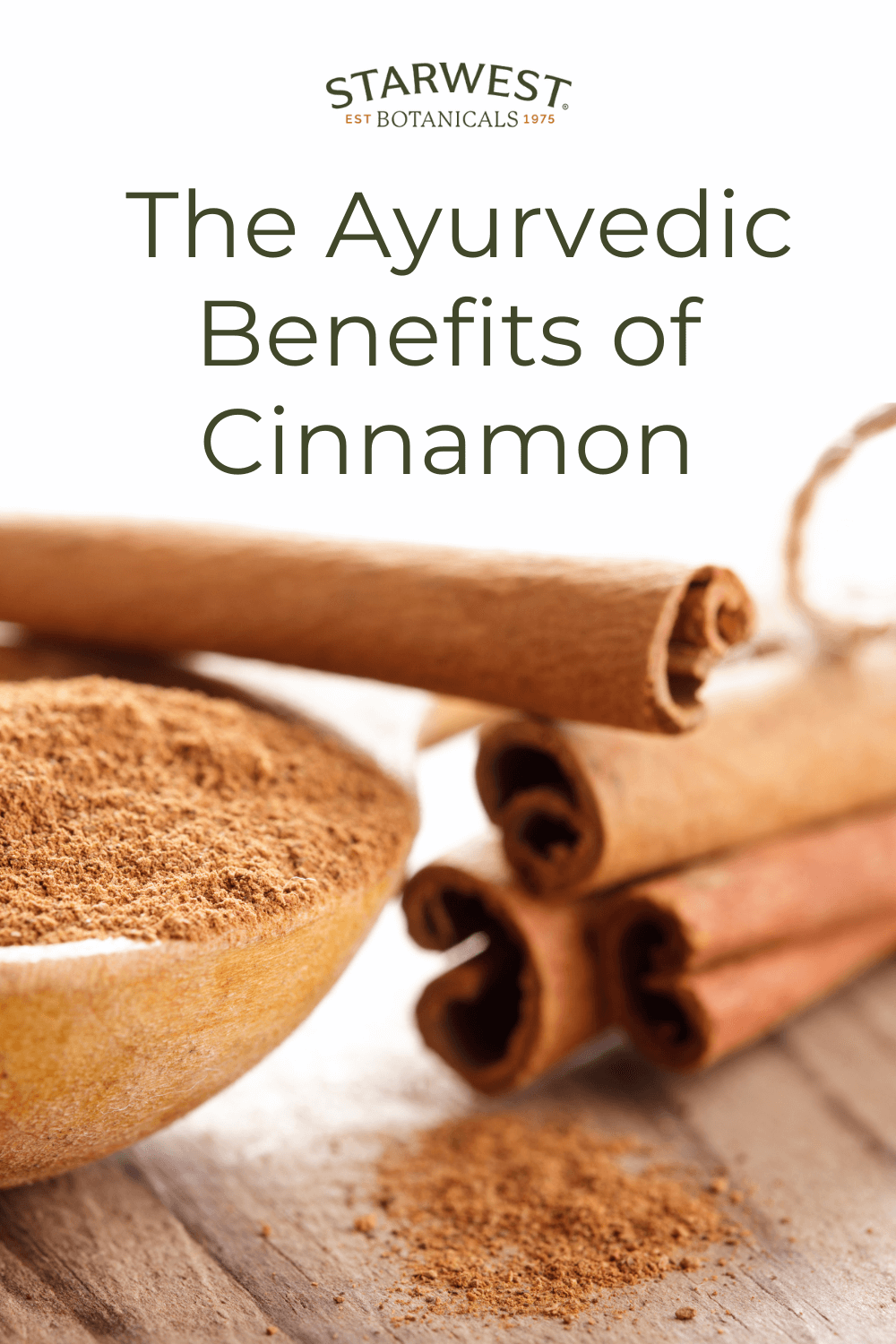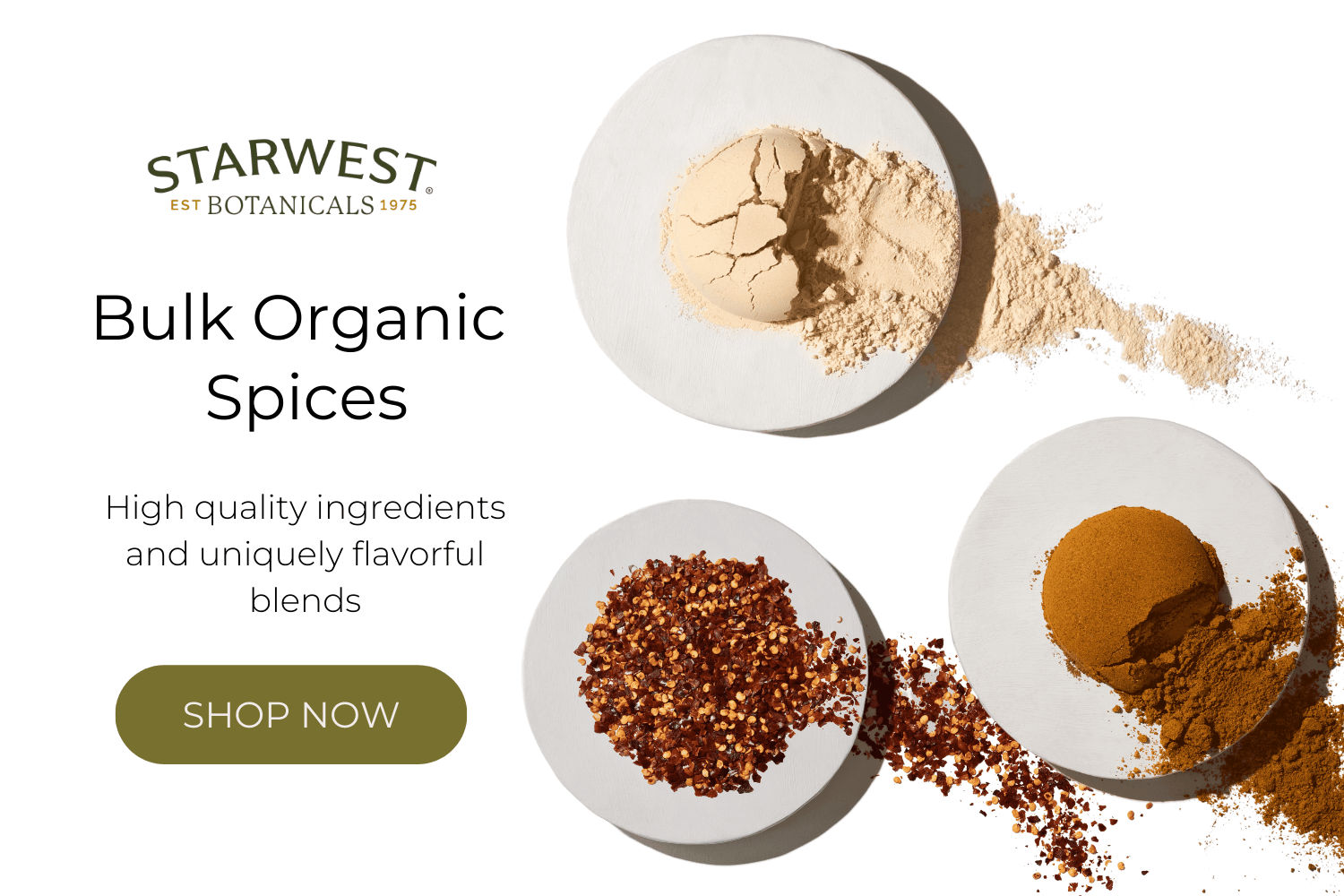The Ayurvedic Benefits of Cinnamon
Posted by Molly McConnell on 12-16-2023

Fall Favorite or Year Round Pantry Staple?
While Cinnamon is an essential pantry staple year round in Ayurvedic culinary traditions, there’s something undeniable about the hold that this herb has on all of us in the fall. As soon as the leaves start to change, cinnamon is on the scene. (Pumpkin spice latte, anyone?) While cinnamon can offer many health benefits throughout the year, fall is when it really steps into its full potential and takes a starring role.
With its powerful sweet and slightly spicy aroma, even the smell of cinnamon is enough to evoke warm and cozy feelings within us. You’re likely to find cinnamon as a key ingredient in fall soups, quick breads, sweet treats, and warm beverages. One of the reasons that cinnamon pairs so nicely with all your favorite fall flavors and seasonal produce is because it brings a gentle digestive quality that helps break down the heavier foods that we are more likely to be eating this time of year (such as seasonal squashes, apples, wheat-based products and even milk).
The Ayurvedic Perspective on Cinnamon
Ancient Ayurvedic wisdom classifies cinnamon as heating, with additional rough, sharp, and light qualities that may help penetrate through stagnation to evoke more flow or create a sense of stimulation when the body needs it most. These qualities speak to why cinnamon is commonly found in natural remedies for seasonal wellness and congestion. This antioxidant rich herb is said to warm the lungs and kidneys, while liquifying mucus.
Ayurveda tells us that cinnamon has a natural inclination to remove excess coldness and dampness from the head and chest. Sip it as a tea with ginger and honey this season to activate fall and winter wellness. Cinnamon, like ginger, is believed to be universally beneficial for a range of ailments and discomforts — especially those that are more likely to turn up in colder months.
Cinnamon and The Doshas
Ayurveda utilizes a system of the elements to identify three different constitutions, or doshas. The three doshas are called vata, pitta, and kapha. Each person has all three within them, but typically one is strong or more present than the others. If you’d like to learn about your Ayurvedic constitution, take a mind body quiz. To learn more about how cinnamon relates to the three doshas, keep reading.
The penetrating and activating qualities embodied by cinnamon make it balancing for kapha dosha (the earth and water elements within us). While the heating action combined with the sweet taste of the herb make it balancing for vata dosha (the air and space elements within us) as well. In moderation, cinnamon is also OK for pitta (the fire element within us).
With its potential mild laxative action, cinnamon can help relieve the body of excess doshas — especially vata and kapha — through the GI tract.
Circulation, Digestion and Beyond
While cinnamon is believed to promote warmth throughout the body, it may also enhance circulation in the joints and extremities. If you are someone who struggles with cold hands and feet, cinnamon may be an ally for you. (See Cinnamon Tea 9 Ways for a recipe!) It contains phytochemicals and flavonoids that may help improve circulation via vasodilation.
The Ayurvedic perspective would attribute this to the stimulating and kapha-reducing qualities of cinnamon. These same energetics are believed to enkindle digestive fire and burn up natural toxins in the GI tract. Those with weak digestion may find cinnamon to be invigorating. It is also believed to aid in absorption of nutrients, especially when paired with bay and cardamom. You will commonly find these aromatic spices working together in things like garam masala and chai tea.
More Ways to Use Cinnamon
Cinnamon, also called tvak in Sanskrit, comes from the inner bark of a tree. Native to Sri Lanka, it is now cultivated throughout wet tropical regions (such as India, Myanmar, and Vietnam). It has been used in holistic and culinary traditions for centuries.
When it comes to oral care, cinnamon has traditionally been used to soothe tooth discomfort and ward off bad breath. You may notice cinnamon as key ingredients in Ayurvedic toothpaste or tooth powder recipes. Within this holistic wisdom and beyond, cinnamon has shown analgesic activity, which make it a wonderful companion for your oral health journey.
We’ve talked a lot about the potential benefits of cinnamon for your body, but what about for your mind and spirit? Spiritually, cinnamon is classified as sattvic, or pure essence, meaning that it is believed to support a calm and meditative state of mind when used appropriately.
To tap into all these potential benefits and more, start by incorporating cinnamon ⅛ - ¼ tsp of cinnamon in foods or beverages daily. Depending on your constitution, health challenges and the season, you may choose to increase this dosage over time. For more inspiration on how to start weaving more of this magical spice into your daily life, see Cinnamon Tea 9 Ways.

Bio
Molly McConnell is a Certified Ayurvedic Practitioner who is committed to cultivating collective wellness. Guided by curiosity, embodied listening, and the rhythms of nature, Molly’s approach to Ayurveda is intentional and intersectional. As the cofounder ofCultivate Balance, she supports purpose-oriented people to come home to their bodies and restore resilience through nourishment, ritual, and routine. For a more immersive experience,Connect with Molly 1:1 or check outThe Reset for Resilience.
Instagram/Tiktok
Website



